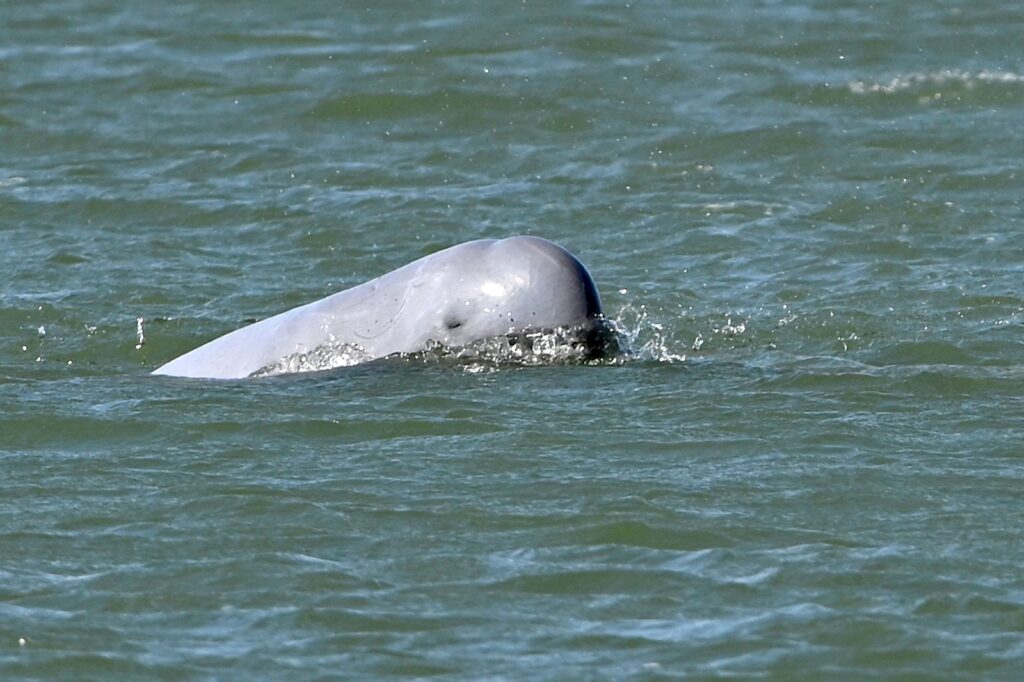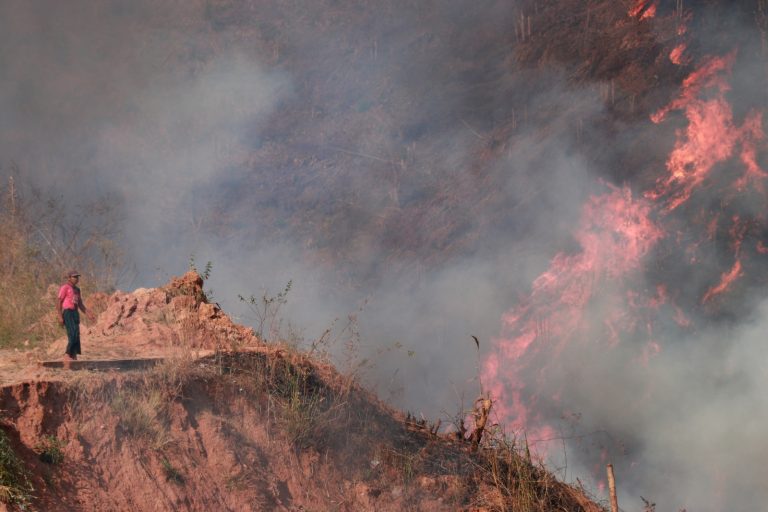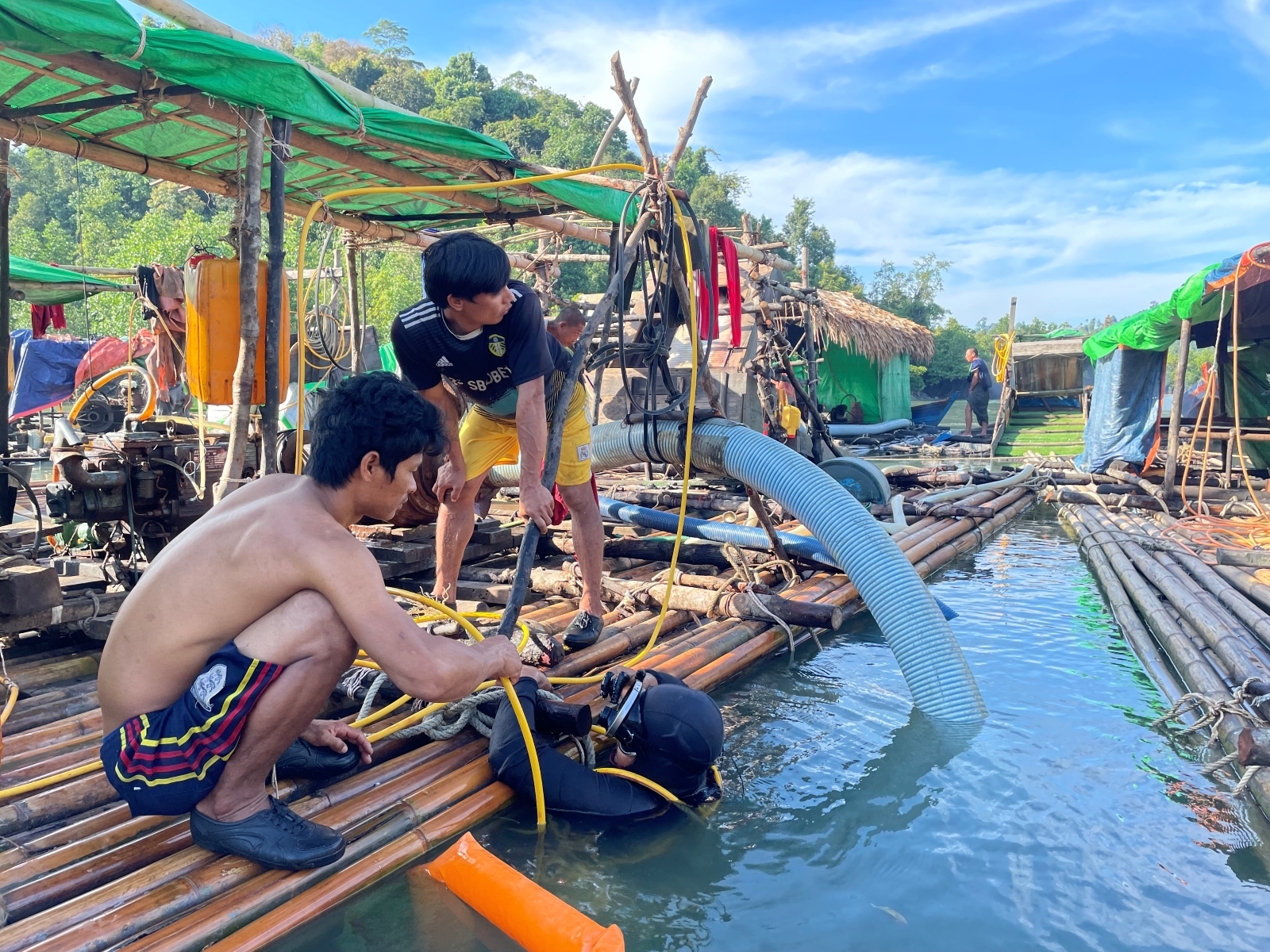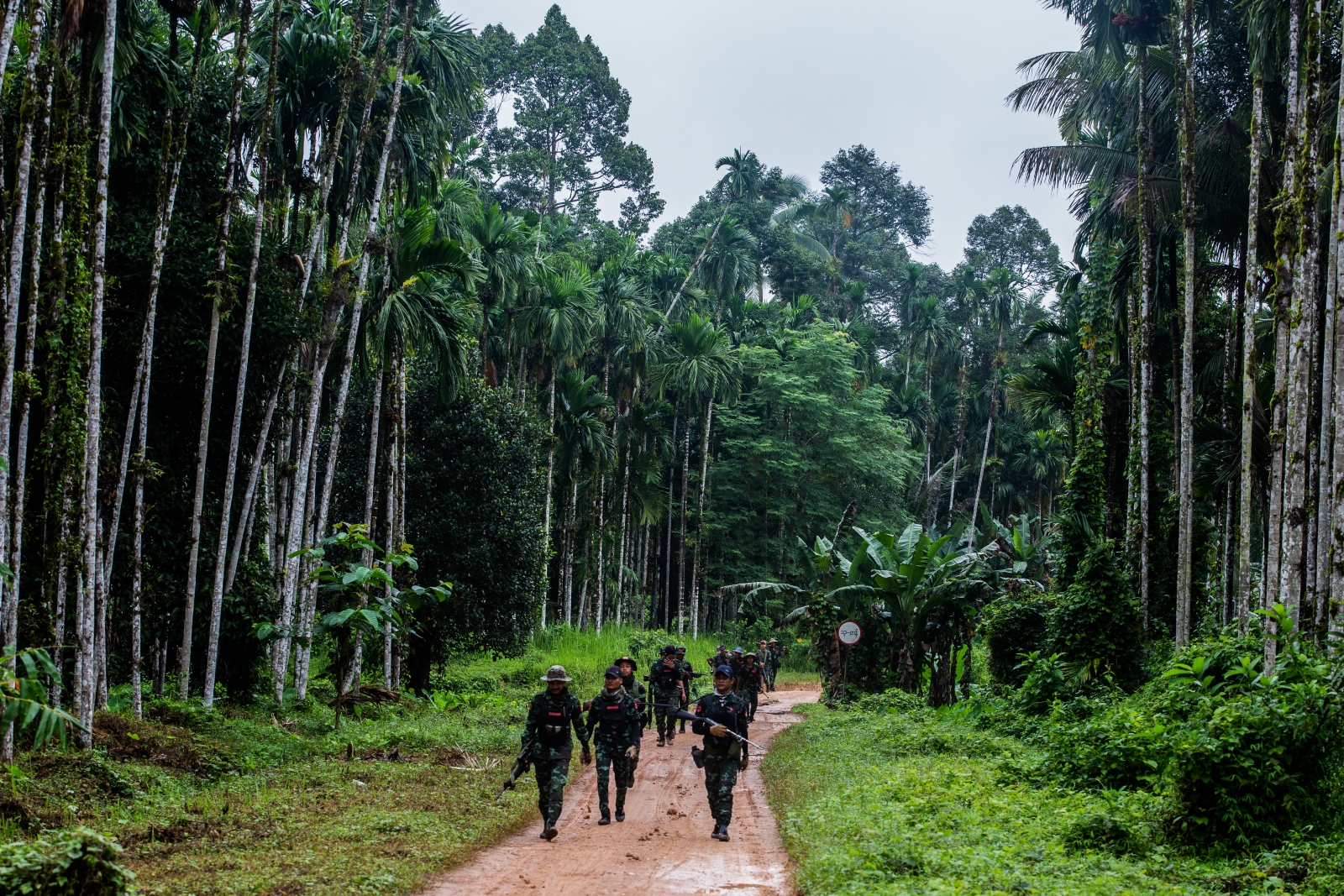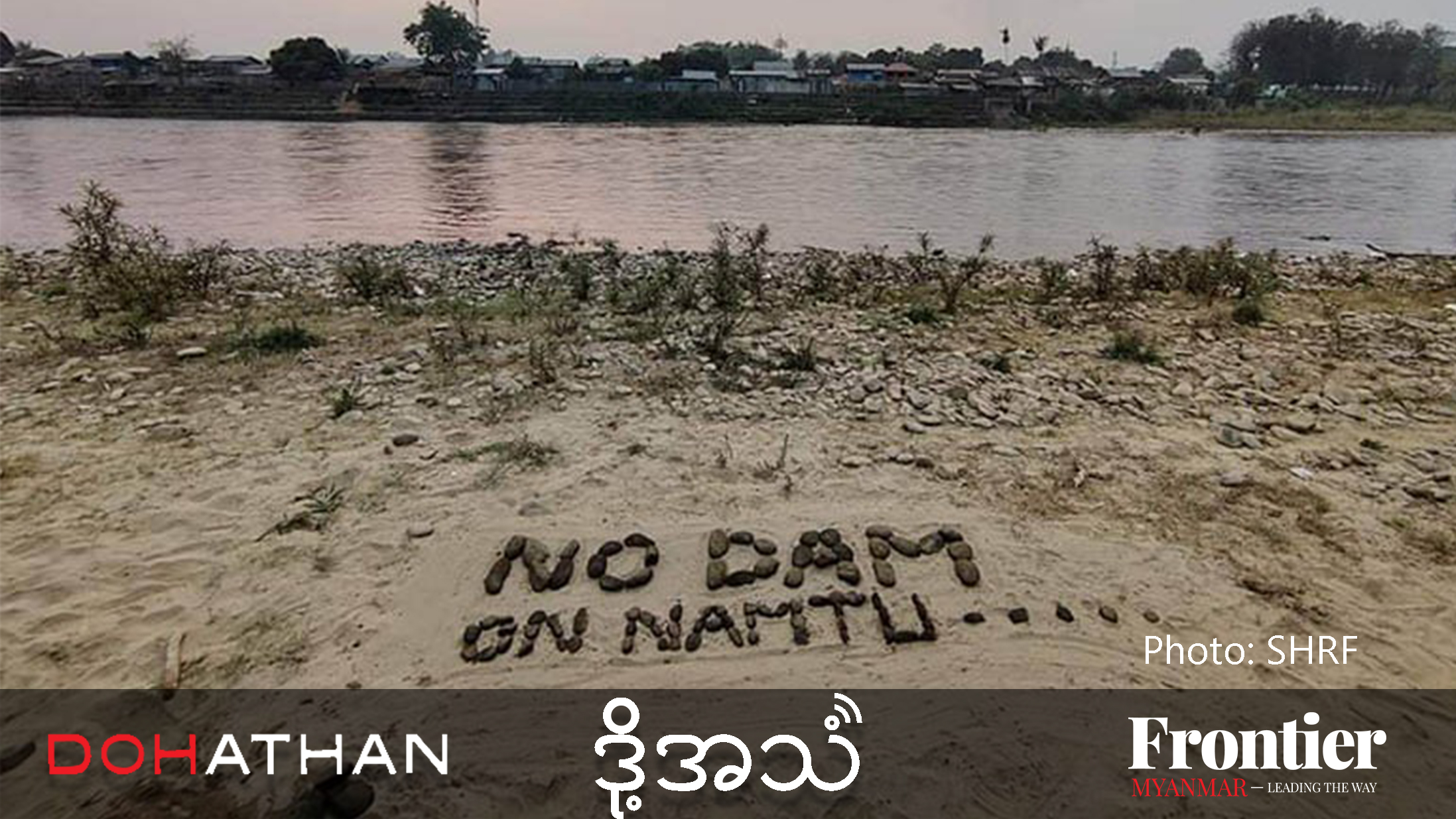Vital conservation activities have been suspended since the 2021 coup, while growing conflict and lawlessness have fuelled a reported rise in illegal fishing techniques that threaten the endangered species.
By ANT PWEH AUNG | FRONTIER
In January 2008, seven Irrawaddy dolphins entered the Mezar Creek in Sagaing Region’s Indaw Township, much to the delight of residents of nearby Shwe Hnget village. But as the tide receded and the dolphins headed back to the main length of the Ayeyarwady River, villagers were alarmed to see one had been left behind.
“Talking about the dolphin rescue from Mezar Creek makes my eyes fill with tears,” said U Myint Soe, who was head of the Katha District Fisheries Department at the time.
When Myint Soe’s team came to investigate, they discovered that the young female was pregnant. Springing into action, the team loaded the dolphin onto a truck with a makeshift tarpaulin pond and drove it to Katha, a town on the banks of the Ayeyarwady.
Thousands of townspeople gathered to watch her release – miraculously joined by six dolphins waiting in the water, believed to be the same pod from Mezar Creek.
“The people of Katha town will also always remember the day we released the dolphin,” said Myint Soe, who bonded so quickly with the animal that he named her Thamee, meaning daughter. “I was so overjoyed to be able to save a pregnant dolphin’s life.”
But if that same emergency happened today, it’s unlikely it would have a fairy tale ending.
Sources involved in dolphin conservation say most projects have been suspended since the military seized power in 2021. What’s more, the subsequent armed conflict and the junta’s weak governance has permitted an apparent rise in illegal fishing techniques that put dolphins at risk, while local authorities and conservationists can no longer access most of their habitat.
“Projects for dolphin conservation and population counts have been discontinued because safety can’t be guaranteed anymore,” said U Maung Maung Oo, leader of the Sein Yaung So environmental activist group, based in Mandalay.
Sources said it’s no longer safe for them to travel along the Ayeyarwady north of Sagaing’s Mingun town, near Mandalay, due to fighting between the military and armed resistance groups.
“The current situation for the Irrawaddy dolphins is alarming,” said U Myo Chit*, a conservationist who worked with Irrawaddy dolphins before the coup. “There were only around 70 of the dolphins in the country even with previous conservation efforts. The fact that no conservation can be done at this time is very concerning.”
‘The situation will only get worse’
The International Union for Conservation of Nature considers the Irrawaddy dolphin endangered globally, while the Ayeyarwady River subpopulation is critically endangered.
The Wildlife Conservation Society, a United States-based organisation, conducted the first comprehensive survey of dolphins in the Ayeyarwady in 2002, finding they primarily lived in a 400-kilometre stretch of the river between Mingun in Sagaing to Bhamo in Kachin State.
A few years later, in 2005, the Department of Fisheries with support from WCS established the Ayeyarwady Dolphin Protected Area, Myanmar’s first aquatic conservation zone. Initially, the ADPA covered around 74km from Mingun up to Singu and Kyaukmyaung townships, but in 2018 it was extended up to Shwegu in Kachin, so that it covered 100km.
The protected area was intended to reduce threats to dolphins like electric fishing, gill nets, certain types of pollution and motorboat traffic. For years, the fisheries department and WCS maintained monthly patrols, monitored for illegal fishing techniques, conducted educational activities for nearby communities and researched the dolphin population.
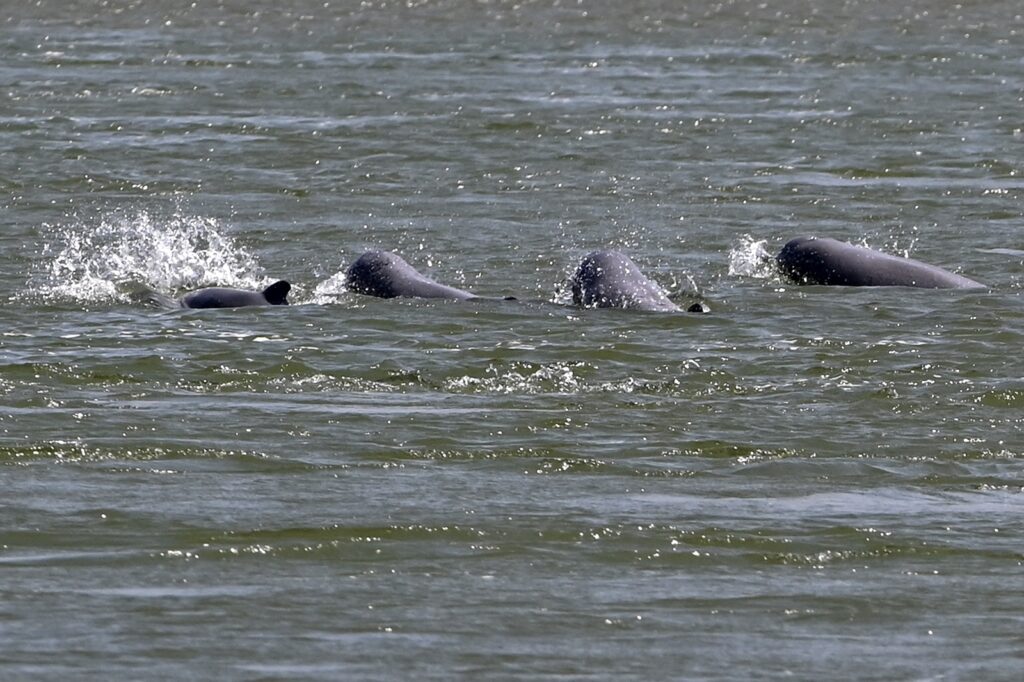
These measures appeared to be working. The recorded population increased from 58 dolphins in 2014 to 79 in 2020. But since the coup, much of this essential work has stopped.
Five sources involved in conservation said the anti-junta People’s Defence Forces have established strongholds north of Mingun, which has led the military to launch regular attacks to try to dislodge them. The sources said that because of this fighting, fisheries department officials and other external monitors can’t access the ADPA anymore, while local fishing communities need to prioritise their survival and are unable to enforce conservation rules.
“It’s no longer possible to conduct conservation work because conflict has intensified in the dolphin protected area. In this situation, survival is the first priority,” said Ko Aung Myint*, a spokesperson for the Living Irrawaddy Dolphin Project.
The LIDP, formed in December last year, teaches fishers not to use techniques harmful to dolphins and asks them to monitor the river for banned activities. It’s supported by the World Wide Fund for Nature, or WWF, and other donors. LIDP supports 24 fishers to act as “dolphin guardians”, receiving US$50 per month in exchange for recording dolphin sightings, including any dead specimens, as well as instances of illegal fishing.
Aung Myint said they’ve reported over 130 dolphin sightings in the last year, usually in groups of around three to eight, although given the limited population, many are bound to be repeat sightings. Most were reported in Madaya and Singu townships, both in the protected area.
While these sightings confirm the population is still there, Aung Myint said it’s impossible to know for sure whether it’s increasing or decreasing without a comprehensive survey, which hasn’t been conducted since February 2020.
The dolphin guardians are active in just over half of the 100km protected area. “The remaining areas along the Ayeyarwady River are inaccessible to us,” he said.
Moreover, while the guardians can observe illegal activity, they have no authority or capacity to prevent it.
Three of them told Frontier that electric fishing appears to be on the rise since the coup, but no action has been taken by authorities, likely in part because they can’t access the river.
“We see about five illegal electrofishing boats in the dolphin protected areas every day but we dare not tell them to stop,” said U Mya Win*, a dolphin guardian living near Singu, who added that the illegal fishers are sometimes armed. “And we don’t bother telling government officials because there are no teams to arrest them.”
Myo Chit, the conservationist, said a planned one-year crackdown was launched in September 2020 but had to be abandoned after the February 2021 coup. In that time, he said authorities arrested around six people for illegal fishing per month, and 10 cases had already been prosecuted in court. The penalty for electric fishing is three years in prison, a fine of up to K200,000 and the confiscation of boats and equipment.
“The Irrawaddy dolphins are undoubtedly in danger if electrofishing is not stopped. The situation will only get worse,” Myo Chit warned.
Based on social media reports, at least two dolphin deaths were confirmed last year and one this year, while the dolphin guardians reported one other death. However, the cause of death can’t be confirmed without conservationists on the ground, and others could be dying away from witnesses.
“Our coverage area has narrowed recently. We are therefore unaware of any dolphin deaths in remote areas,” LIDP spokesperson Aung Myint said.
Heritage at risk
Myanmar is one of just three places in the world where fishers have been documented working together with dolphins to catch fish – a practice known as cooperative fishing.
“Communication via calls and signals is made by both dolphins and fishers, with the dolphins rearing schools of fish towards the cast net fishing boats and signalling to the fishers to throw their nets when the fish [get] close to the boat,” says the LIDP website.
The only other places this is known to occur are Laguna, Brazil and parts of Mauritania where the Imraguen people live.
But this unique cultural heritage is at risk of dying out. Even before the coup, the practice was already on the decline – mostly kept alive by ecotourism groups – as modern fishing techniques took over. Fishers say the apparent increase in electrofishing since the coup could exacerbate the problem, because dolphins that experience electric shocks can become distrustful of humans.
The conflict and collapse of tourism aren’t helping either.
U Moe Myint*, a spokesperson for the Ayeyarwady Dolphin Community Based Ecotourism group, said there were 314 fishers engaged in cooperative fishing through the group before the coup. But tourism tanked due to COVID-19 and the post-coup conflict ensured it never recovered. Moe Myint said more than two-thirds of the fishers left their jobs following these crises, but they could return if the conflict were resolved.
“In terms of preserving culture, it’s very worrying that this tradition could disappear,” said Maung Maung Oo from the Sein Yaung So environmental group.
U Min Thein*, a 51-year-old fisher living near Mingun who works with the ecotourism network, said he has sought to keep the tradition alive even though there are no longer tourists. He says around once a month he searches for dolphins to fish with him, as he’s been doing for more than 30 years.
“Nowadays, very few fishers engage in cooperative fishing with the dolphins, because many relocated to cities with their families to find new jobs,” said Min Thein. “I’m worried that this special tradition will disappear, so I keep an eye out for the dolphins and fish with them whenever it’s safe enough.”
*indicates the use of a pseudonym for security reasons


